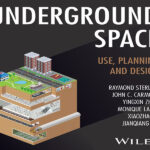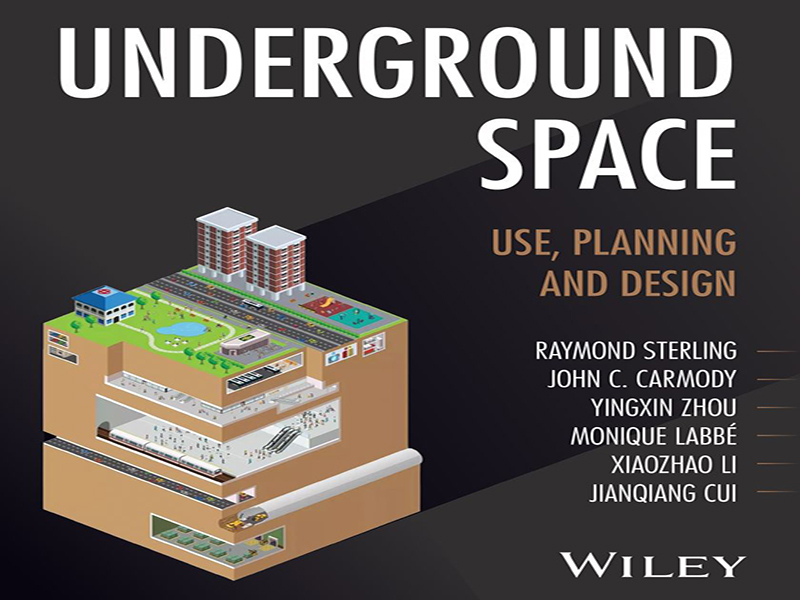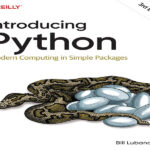- عنوان کتاب: Underground Space Use, Planning and Design
- نویسنده: Raymond L. Sterling, Jianqiang Cui
- حوزه: طراحی زیرزمین
- سال انتشار: 2025
- تعداد صفحه: 481
- زبان اصلی: انگلیسی
- نوع فایل: pdf
- حجم فایل: 44.8 مگابایت
یک اتفاق غمانگیز که باید فوراً به آن اشاره کرد این است که جان کارمودی، نویسنده همکار من در کتاب اصلی، در پایان سال ۲۰۱۹ درگذشت و از این رو نتوانست در تهیه این نسخه جدید مشارکت داشته باشد. جان به عنوان مدیر وابسته مرکز فضای زیرزمینی خدمت میکرد و چهرهای کلیدی در بسیاری از نشریات و تحقیقات آن در مورد برنامهریزی و طراحی فضای زیرزمینی بود. در تهیه نسخه جدید، تیم نویسندگان جدید تلاش کردهاند تا رویکرد «الگوی طراحی» خردمندانه و کاربردی جان را در ارائه راهنمایی در مورد چگونگی طراحی بهینه فضاهای زیرزمینی برای مردم حفظ کنند. اکنون کمی بیش از ۳۰ سال از انتشار کتاب اصلی که این جلد بهروز شده بر اساس آن است، میگذرد. در این ۳۰ سال اتفاقات زیادی افتاده است و با این حال بسیاری از مسائل و سوالات همچنان یکسان باقی ماندهاند. دو پاراگراف از مقدمه اصلی امروز به همان اندازه که ۳۰ سال پیش مرتبط بودند، مرتبط هستند. این موارد به سادگی در اینجا تکرار میشوند: در طول قرن گذشته شاهد رشد سریع استفاده از تأسیسات زیرزمینی برای اهداف متنوع و رو به رشد بودهایم. چرا اینطور است؟ پیامدهای آن برای آینده جامعه چیست؟ آیا باید از مردم خواسته شود که در تأسیسات زیرزمینی کار کنند، یا باید از فضای زیرزمینی صرفاً برای خدمات مکانیکی یا حمل و نقل و کارکردهای کماستفاده مانند انبار استفاده شود؟ اگر قرار است از فضای زیرزمینی به بهترین نحو در خدمت بشریت استفاده شود، تلاش برای پاسخ به این سؤالات مهم است. نویسندگان مایلند هنگام خواندن این کتاب بر چند نکته کلیدی تأکید کنند. اول، اگرچه تمرکز کتاب بر روی افراد در فضای زیرزمینی است، اما این نباید به این معنی تلقی شود که کار کردن یا ماندن افراد در زیر زمین ایدهآل است. به طور مشابه، استفاده از فضای زیرزمینی نیز به خودی خود یک هدف نیست. هر دو جلوههایی از مبارزه برای حفظ محیطی مؤثر، جذاب و از نظر زیستمحیطی مناسب برای جمعیت رو به گسترش ما هستند. این مبارزه برای بهبود خدمات و بهبود محیط سطحی ما باید از الگوهای توسعه موروثی جوامع ما به عنوان پایه خود استفاده کند. در حالی که ما از ترجیح «افراد بالا – چیزهای پایین» حمایت میکنیم، واقعیت این است که حتی کارکردهای خدماتی نیز به افرادی برای کار و نگهداری از آنها نیاز دارند و گاهی اوقات با قرار دادن کاربریهای مردممحور در زیر زمین، خیر کلی یک جامعه تأمین میشود. نمونههای زیادی از چنین مواردی ارائه شده است. کاری که میتوانیم برای انجام آن تلاش کنیم، اطمینان از ایجاد قابل قبولترین محیطها برای افراد، چه در زیر زمین و چه در بالای زمین، است.
A sad event that must be noted immediately is that my co-author for the original book, John Carmody, passed away at the end of 2019 and hence could not be involved in the preparation of this new edition. John served as the Associate Director of the Underground Space Center and was a key figure in many of its publications and research about the planning and design of underground space. In preparing the new edition, the new author team has worked to maintain John’s insightful and practical “design pattern” approach to providing guidance on how to best design underground spaces for people. It is now a little more than 30 years since the original book on which this updated volume is based was published. Much has happened in that 30 years and yet many issues and questions remain the same. Two paragraphs from the original preface remain as relevant today as they were 30 years ago. These are simply repeated here: Over the past century we have witnessed a rapid growth in the use of underground facilities for an expanding variety of purposes. Why is this? What are the implications for the future of society? Should people be required to work in underground facilities, or should underground space be used solely for mechanical or transit services and low occupancy functions such as storage? It is important to try to answer these questions if underground space is to be put to its highest use in the service of humankind. The authors would like to emphasize a few key points as you read this book. First, while the focus of the book is on people in underground space, this should not be taken as implying that having people work or stay underground is ideal. Similarly, the use of underground space is also not a goal in its own right. Both are manifestations of a struggle to maintain an effective, attractive, and ecologically sound environment for our expanding population. This struggle to improve services and better our surface environment has to use as its base the inherited development patterns of our societies. While we espouse a preference for “people above – things below,” the reality is that even service functions need people to staff and maintain them and that sometimes the overall good of a community is served by locating people-oriented uses below ground. Many examples of such cases are given. What we can strive to do is ensure that we create the most acceptable environments for people both below and above ground.
این کتاب را میتوانید از لینک زیر بصورت رایگان دانلود کنید:




































نظرات کاربران